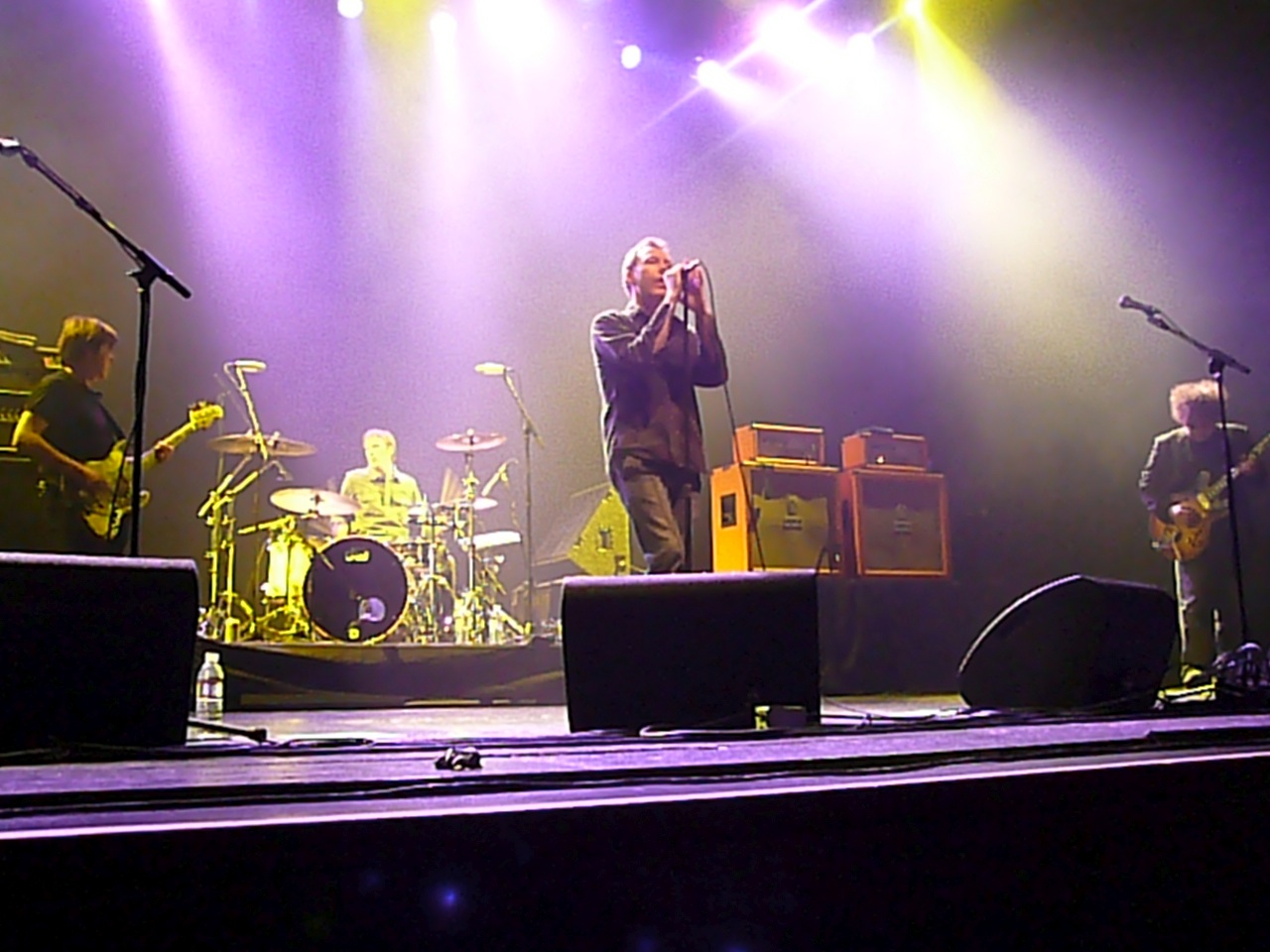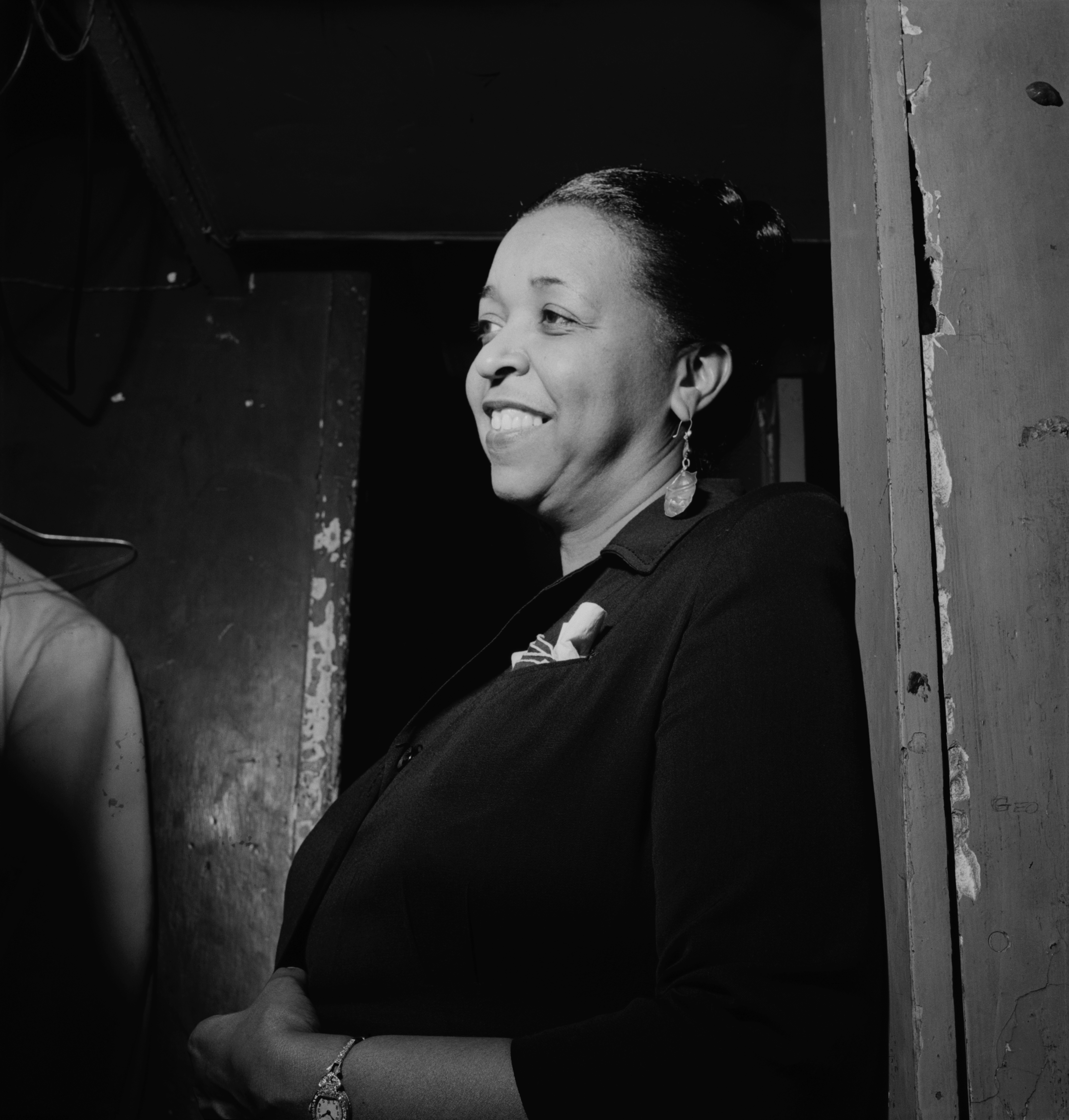|
KRTU-FM
KRTU-FM (91.7 MHz) is a radio station broadcasting a mainstream Jazz format. Licensed in San Antonio, Texas, United States, the station serves the San Antonio area. The station is owned by Trinity University. Between 10 p.m. and 5 a.m., the station format changes from mainstream jazz to alternative and indie rock. KRTU 91.7 is a resource of the Department of Communication that supports the academic curriculum while demonstrating Trinity University’s leadership in education and the arts. About Founded in 1976, KRTU is a non-commercial educational, nonprofit radio station under Trinity's 501(c)(3). KRTU programs a 17-hour/day mainstream jazz format, with alternative/indie rock overnight. The broadcast reaches throughout the San Antonio metropolitan area and into adjoining townships. KRTU is available in HD terrestrially and can be streamed worldwide on the Internet. The station employs a full-time staff of six, while students and community volunteers support the operations t ... [...More Info...] [...Related Items...] OR: [Wikipedia] [Google] [Baidu] |
Trinity University (Texas)
Trinity University is a private liberal arts college in San Antonio, Texas. Founded in 1869, its student body consists of about 2,600 undergraduate and 200 graduate students. Trinity offers 49 majors and 61 minors among six degree programs, and has an endowment of $1.725 billion. Trinity is a member institution of the Annapolis Group, a consortium of national independent colleges that share a commitment to liberal arts values and education, and the Associated Colleges of the South, 16 southern liberal arts colleges that collaborate on staff and curricular enhancements. History Cumberland Presbyterians founded Trinity in 1869 in Tehuacana, Texas, from the remnants of three small Cumberland Presbyterian colleges that had lost significant enrollment during the Civil War. John Boyd, who had served in the Congress of the Republic of Texas from 1836 to 1845 and in the Texas Senate from 1862 to 1863, donated 1,100 acres of land and financial assistance to establish the new un ... [...More Info...] [...Related Items...] OR: [Wikipedia] [Google] [Baidu] |
List Of Jazz Radio Stations In The United States ...
This is a list of terrestrial, satellite and internet radio stations which identify themselves as playing jazz in any of its forms (mainstream, traditional, fusion, acid, and smooth, among others), or have substantial jazz programming, that can be heard in the United States. References * {{Cite web , url=http://radio-locator.com/cgi-bin/finder?format=jaz&s=R&sr=Y , title=Jazz Radio Stations , website=Radio-Locator.com Jazz Radio Stations Radio broadcasting is transmission of audio signal, audio (sound), sometimes with related metadata, by radio waves to radio receivers belonging to a public audience. In terrestrial radio broadcasting the radio waves are broadcast by a land-b ... [...More Info...] [...Related Items...] OR: [Wikipedia] [Google] [Baidu] |
San Antonio
("Cradle of Freedom") , image_map = , mapsize = 220px , map_caption = Interactive map of San Antonio , subdivision_type = Country , subdivision_name = United States , subdivision_type1= U.S. state, State , subdivision_name1 = Texas , subdivision_type2 = County (United States), Counties , subdivision_name2 = Bexar County, Texas, Bexar, Comal County, Texas, Comal, Medina County, Texas, Medina , established_title = Foundation , established_date = May 1, 1718 , established_title1 = Incorporated , established_date1 = June 5, 1837 , named_for = Saint Anthony of Padua , government_type = Council-manager government, Council-Manager , governing_body = San Antonio City Council , leader_title = Mayor of San Antonio, Mayor , leader_name = Ron Nirenberg (Independent politician, I) , leader_title2 = City Manager , leader_name2 = Erik Walsh , leader_title3 = San Antonio City Council, City Council , leader_name3 = , unit_pref = Imperial , area_total_sq_m ... [...More Info...] [...Related Items...] OR: [Wikipedia] [Google] [Baidu] |
Jazz
Jazz is a music genre that originated in the African-American communities of New Orleans, Louisiana in the late 19th and early 20th centuries, with its roots in blues and ragtime. Since the 1920s Jazz Age, it has been recognized as a major form of musical expression in traditional and popular music. Jazz is characterized by swing and blue notes, complex chords, call and response vocals, polyrhythms and improvisation. Jazz has roots in European harmony and African rhythmic rituals. As jazz spread around the world, it drew on national, regional, and local musical cultures, which gave rise to different styles. New Orleans jazz began in the early 1910s, combining earlier brass band marches, French quadrilles, biguine, ragtime and blues with collective polyphonic improvisation. But jazz did not begin as a single musical tradition in New Orleans or elsewhere. In the 1930s, arranged dance-oriented swing big bands, Kansas City jazz (a hard-swinging, bluesy, improvisationa ... [...More Info...] [...Related Items...] OR: [Wikipedia] [Google] [Baidu] |
Indie Rock
Indie rock is a Music subgenre, subgenre of rock music that originated in the United States, United Kingdom and New Zealand from the 1970s to the 1980s. Originally used to describe independent record labels, the term became associated with the music they produced and was initially used interchangeably with alternative rock or "Pop rock, guitar pop rock". One of the primary scenes of the movement was Dunedin, where Dunedin sound, a cultural scene based around a convergence of noise pop and jangle became popular among the city's University of Otago, large student population. Independent labels such as Flying Nun Records, Flying Nun began to promote the scene across New Zealand, inspiring key college rock bands in the United States such as Pavement (band), Pavement, Pixies (band), Pixies and R.E.M. Other notable scenes grew in Madchester, Manchester and Hamburger Schule, Hamburg, with many others thriving thereafter. In the 1980s, the use of the term "independent music, indie" (or " ... [...More Info...] [...Related Items...] OR: [Wikipedia] [Google] [Baidu] |
Watt
The watt (symbol: W) is the unit of power or radiant flux in the International System of Units (SI), equal to 1 joule per second or 1 kg⋅m2⋅s−3. It is used to quantify the rate of energy transfer. The watt is named after James Watt (1736–1819), an 18th-century Scottish inventor, mechanical engineer, and chemist who improved the Newcomen engine with his own steam engine in 1776. Watt's invention was fundamental for the Industrial Revolution. Overview When an object's velocity is held constant at one metre per second against a constant opposing force of one newton, the rate at which work is done is one watt. : \mathrm In terms of electromagnetism, one watt is the rate at which electrical work is performed when a current of one ampere (A) flows across an electrical potential difference of one volt (V), meaning the watt is equivalent to the volt-ampere (the latter unit, however, is used for a different quantity from the real power of an electrical circuit). : ... [...More Info...] [...Related Items...] OR: [Wikipedia] [Google] [Baidu] |
Hertz
The hertz (symbol: Hz) is the unit of frequency in the International System of Units (SI), equivalent to one event (or cycle) per second. The hertz is an SI derived unit whose expression in terms of SI base units is s−1, meaning that one hertz is the reciprocal of one second. It is named after Heinrich Rudolf Hertz (1857–1894), the first person to provide conclusive proof of the existence of electromagnetic waves. Hertz are commonly expressed in multiples: kilohertz (kHz), megahertz (MHz), gigahertz (GHz), terahertz (THz). Some of the unit's most common uses are in the description of periodic waveforms and musical tones, particularly those used in radio- and audio-related applications. It is also used to describe the clock speeds at which computers and other electronics are driven. The units are sometimes also used as a representation of the energy of a photon, via the Planck relation ''E'' = ''hν'', where ''E'' is the photon's energy, ''ν'' is its freq ... [...More Info...] [...Related Items...] OR: [Wikipedia] [Google] [Baidu] |
Radio Station
Radio broadcasting is transmission of audio (sound), sometimes with related metadata, by radio waves to radio receivers belonging to a public audience. In terrestrial radio broadcasting the radio waves are broadcast by a land-based radio station, while in satellite radio the radio waves are broadcast by a satellite in Earth orbit. To receive the content the listener must have a broadcast radio receiver (''radio''). Stations are often affiliated with a radio network which provides content in a common radio format, either in broadcast syndication or simulcast or both. Radio stations broadcast with several different types of modulation: AM radio stations transmit in AM ( amplitude modulation), FM radio stations transmit in FM (frequency modulation), which are older analog audio standards, while newer digital radio stations transmit in several digital audio standards: DAB (digital audio broadcasting), HD radio, DRM ( Digital Radio Mondiale). Television broadcasting ... [...More Info...] [...Related Items...] OR: [Wikipedia] [Google] [Baidu] |
Federal Communications Commission
The Federal Communications Commission (FCC) is an independent agency of the United States federal government that regulates communications by radio, television, wire, satellite, and cable across the United States. The FCC maintains jurisdiction over the areas of broadband access, fair competition, radio frequency use, media responsibility, public safety, and homeland security. The FCC was formed by the Communications Act of 1934 to replace the radio regulation functions of the Federal Radio Commission. The FCC took over wire communication regulation from the Interstate Commerce Commission. The FCC's mandated jurisdiction covers the 50 states, the District of Columbia, and the territories of the United States. The FCC also provides varied degrees of cooperation, oversight, and leadership for similar communications bodies in other countries of North America. The FCC is funded entirely by regulatory fees. It has an estimated fiscal-2022 budget of US $388 million. It has 1,482 ... [...More Info...] [...Related Items...] OR: [Wikipedia] [Google] [Baidu] |
Radio Stations In San Antonio
Radio is the technology of signaling and telecommunication, communicating using radio waves. Radio waves are electromagnetic waves of frequency between 30 hertz (Hz) and 300 gigahertz (GHz). They are generated by an electronic device called a transmitter connected to an antenna (radio), antenna which radiates the waves, and received by another antenna connected to a radio receiver. Radio is very widely used in modern technology, in radio communication, radar, radio navigation, remote control, remote sensing, and other applications. In radio communication, used in radio broadcasting, radio and television broadcasting, cell phones, two-way radios, wireless networking, and satellite communication, among numerous other uses, radio waves are used to carry information across space from a transmitter to a receiver, by Modulation, modulating the radio signal (impressing an information signal on the radio wave by varying some aspect of the wave) in the transmitter. In radar, u ... [...More Info...] [...Related Items...] OR: [Wikipedia] [Google] [Baidu] |
Jazz Radio Stations In The United States
Jazz is a music genre that originated in the African-American communities of New Orleans, Louisiana in the late 19th and early 20th centuries, with its roots in blues and ragtime. Since the 1920s Jazz Age, it has been recognized as a major form of musical expression in traditional and popular music. Jazz is characterized by swing and blue notes, complex chords, call and response vocals, polyrhythms and improvisation. Jazz has roots in European harmony and African rhythmic rituals. As jazz spread around the world, it drew on national, regional, and local musical cultures, which gave rise to different styles. New Orleans jazz began in the early 1910s, combining earlier brass band marches, French quadrilles, biguine, ragtime and blues with collective polyphonic improvisation. But jazz did not begin as a single musical tradition in New Orleans or elsewhere. In the 1930s, arranged dance-oriented swing big bands, Kansas City jazz (a hard-swinging, bluesy, improvisational style ... [...More Info...] [...Related Items...] OR: [Wikipedia] [Google] [Baidu] |







